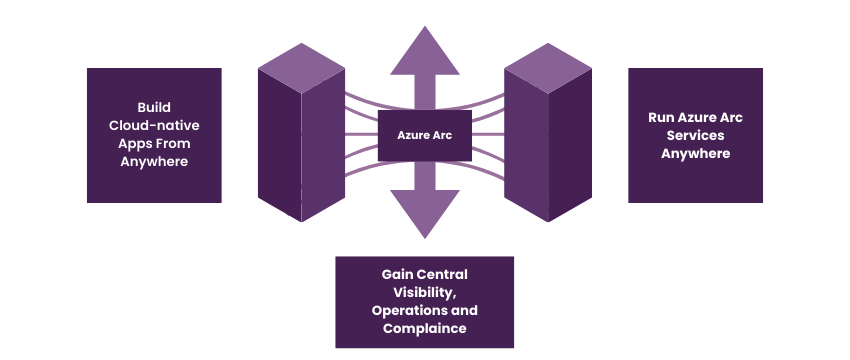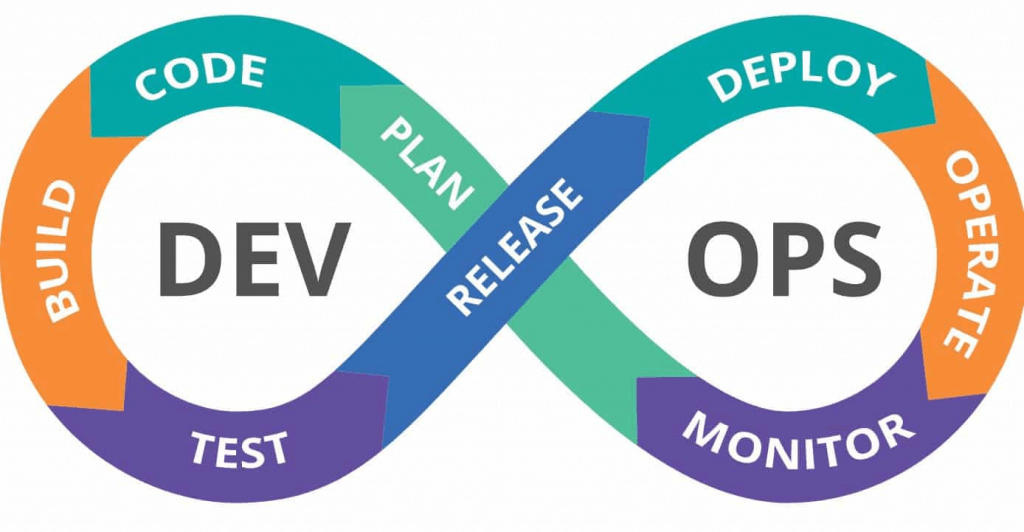
- Introduction to Azure Arc
- Key Features of Azure Arc
- How Azure Arc Works
- Managing On-Premises and Multi-Cloud Environments with Azure Arc
- Azure Arc for Kubernetes and Containerized Applications
- Security and Compliance in Azure Arc
- Hybrid Cloud Benefits with Azure Arc
- Best Practices for Azure Arc Deployment
- Cost Considerations for Azure Arc
- Integrating Azure Arc with Other Azure Services
- Everyday Use Cases for Azure Arc
- Future Roadmap for Azure Arc
- Conclusion
Introduction to Azure Arc
Organizations adopt hybrid and multi-cloud environments in an increasingly complex digital landscape to achieve flexibility, scalability, and agility. As enterprises seek to extend their cloud capabilities beyond the traditional boundaries of the public cloud, Microsoft has introduced Azure Arc, a solution designed to bring Azure management, governance, and security capabilities to on-premises, multi-cloud, and edge environments. Azure Arc enables businesses to manage their resources in data centers, across different cloud providers, or at the edge as if native to the Azure platform, a capability explored in-depth through Microsoft Azure Training. This provides a consistent approach to managing workloads, applications, and services regardless of location. Azure Arc is particularly beneficial for enterprises wanting to retain control over their on-premises systems while taking advantage of its advanced services. It also simplifies the complexity of managing multi-cloud environments by providing a unified interface. This article will dive into Azure Arc’s key features, functionalities, and benefits, how it works, and its use cases across different industries.
To Earn Your Azure Certification, Gain Insights From Leading Azure Experts And Advance Your Career With ACTE’s Azure Training Today!
Key Features of Azure Arc
- Unified Management: Azure Arc enables unified management of all resources, regardless of their location. Whether the resources are in on-premises data centers, in other public clouds like AWS or Google Cloud, or even at the edge, Azure Arc provides a single window for managing, monitoring, and governing them, while AWS Transit Gateway simplifies network management and connectivity across AWS environments.
- Azure Resource Manager (ARM) Integration: With Azure Arc, you can extend Azure’s native resource management and governance capabilities to resources outside of Azure. This means you can use Azure Resource Manager (ARM) templates, policies, and other governance tools to manage resources outside Azure consistently.
- Kubernetes and Container Management: Azure Arc allows seamless integration with Kubernetes clusters, regardless of whether they run in Azure, on-premises, or other clouds. This feature is vital for organizations heavily invested in containerized applications and must manage their Kubernetes clusters centrally.
- Azure Security and Compliance: Security is a key priority with Azure Arc. You can apply the same security policies and practices across on-premises, multi-cloud, and edge resources by leveraging Azure security tools such as Azure Security Center. Azure Arc also integrates with Azure Policy, ensuring that security and compliance requirements are consistently met across all environments.
- Azure Data Services Anywhere: Azure Arc extends the ability to run Azure data services, such as Azure SQL Managed Instance and Azure PostgreSQL, anywhere you need them. This allows you to deploy and manage these services across on-premises, edge, and multi-cloud environments, all while using the same Azure-based management and monitoring tools.
- Hybrid Identity and Access Management: Azure Arc integrates with Azure Active Directory (AAD) for consistent identity and access management across all environments, while AWS DataSync facilitates fast, secure, and automated data transfer between on-premises storage and AWS services. This ensures seamless and secure authentication for users and applications regardless of where they run.
- Centralized Management: Azure Arc centralizes the management of resources, reducing the complexity of managing disparate systems.
- Cross-Cloud Support: It provides native integrations with non-Azure clouds like AWS, Google Cloud, and others, enabling consistent resource management across all clouds, while Data Movement and Transformation in Azure Data Factory ensures seamless data workflows and transformation across diverse environments.
- Consistency Across Environments: It ensures that policies, security, and governance are applied consistently, regardless of the resource’s location.
- Azure Security Center Integration: Azure Arc integrates with Azure Security Center to provide security monitoring and threat detection for on-premises and multi-cloud resources.
- Azure Policy Enforcement: Azure Arc enables organizations to enforce policies consistently across all their resources, regardless of their location, a concept thoroughly covered in Microsoft Azure Training.
- Identity Management: With Azure Active Directory (AAD) integration, Azure Arc ensures that only authorized users and applications can access resources. Compliance:
- Regulatory Frameworks: Azure Arc helps organizations meet regulatory requirements by providing tools that enforce security standards such as ISO 27001, SOC 2, GDPR, and more.
- Consistent Audits: Azure’s auditing tools log all changes made to infrastructure, which helps with compliance audits and security incident response.
- Plan for Integration: Before starting the management process, ensure that all environments (on-premises, multi-cloud, edge) are correctly connected to Azure Arc.
- Standardize Policies: Use Azure Policy to standardize security, compliance, and configuration settings across all environments.
- Automate Management: Leverage Azure Automation and Azure Logic Apps to automate processes, patching, and scaling in hybrid and multi-cloud environments.
- Monitor Consistently: Use Azure Monitor and Azure Security Center to monitor the health and security status of all resources under management, while Docker Containers on AWS provide a scalable solution for deploying and managing containerized applications in the AWS cloud.
- Azure Kubernetes Service (AKS): Azure Arc extends AKS capabilities to Kubernetes clusters outside Azure.
- Azure Security Center: Provides unified security management across on-premises, multi-cloud, and edge resources.
- Azure Monitor: Enables consistent monitoring and diagnostics across all environments, including on-premises and other clouds.
- Azure Automation: Streamlines automation across hybrid environments, helping reduce manual intervention, while Azure DNS Management ensures reliable and efficient domain name system services for your cloud-based resources.
- Broader Cloud Support: Expanding support for additional public clouds and hybrid infrastructures.
- More Azure Services: Bringing additional Azure services, such as AI, machine learning, and databases, to hybrid and multi-cloud environments.
- Edge Computing Enhancements: Increasing functionality for edge computing, especially in IoT and 5G environments.
- Improved Security Features: Enhancing security measures to protect data and workloads across hybrid and multi-cloud environments is a crucial focus of Microsoft Azure Training.
- Cost Optimization Tools: Introducing new tools to help businesses optimize costs and resource usage in Azure Arc deployments.
Azure Arc is a robust service with a wide range of features that simplify the management of diverse IT environments. Some of the most notable features include:

How Azure Arc Works
Azure Arc extends Azure’s cloud management capabilities to external environments, such as on-premises data centers, other public clouds, and edge locations. The core idea is to provide a consistent control plane that can seamlessly manage diverse resources.Resources outside Azure are connected to the Azure platform by installing the Azure Arc agent on the machines or clusters. For Kubernetes clusters, the Azure Arc agent is deployed within the Kubernetes environment to allow Azure to manage and monitor the cluster.Once connected, Azure Arc enables users to bring Azure services, such as Azure Monitor, Azure Security Center, and Azure Policy, to these resources. This allows users to apply the same tools and controls used for Azure-native resources to those outside Azure. Through the Azure portal, administrators can manage and monitor these external resources using the same tools and interface they would use for Azure resources. Azure Arc also integrates with other Azure tools like Azure Automation, allowing organizations to automate processes across all environments.
Managing On-Premises and Multi-Cloud Environments with Azure Arc
Azure Arc is particularly valuable for businesses operating in hybrid and multi-cloud environments. Many organizations use a combination of on-premises infrastructure, private clouds, and multiple public cloud providers for different applications and workloads. Azure Arc simplifies managing these diverse environments, offering a centralized management plane to manage resources across all of them.
-
Key Advantages:
Azure Arc for Kubernetes and Containerized Applications
One significant use case for Azure Arc is its ability to manage Kubernetes clusters across different environments. With Azure Arc, organizations can extend Azure’s Kubernetes management and monitoring capabilities to clusters not running in Azure, including both on-premises and multi-cloud Kubernetes clusters.Azure Arc enables users to deploy, monitor, and manage Kubernetes clusters from a centralized Azure portal.Policies and configurations can be standardized across all clusters, ensuring consistency across environments.Kubernetes clusters running on other clouds can be managed as efficiently as Azure ones.Kubernetes clusters, and the applications within them, can be easily moved between different environments.Azure Arc enables hybrid cloud for containerized applications by extending Azure’s container services to external environments.
Explore Azure in Depth, Check Out Our Comprehensive Azure Training To Gain Insights From Our Experts!
Security and Compliance in Azure Arc
Security and compliance are critical factors in today’s enterprise IT environment, and Azure Arc has been designed with these priorities in mind. Azure Arc leverages Azure’s robust security and compliance framework, which ensures that external resources are protected just as securely as those running natively in Azure.
-
Key Security Features:
Hybrid Cloud Benefits with Azure Arc
Azure Arc enhances the hybrid cloud experience by allowing businesses to seamlessly extend Azure services to on-premises data centers, edge locations, and multi-cloud environments. Azure Arc provides a seamless bridge between on-premises and cloud environments. It offers a unified control plane, enabling IT teams to manage and govern resources across all environments, regardless of where they are hosted. Azure Arc simplifies governance, while GitLab Features & Setup streamlines DevOps workflows and source code management across diverse platforms. It allows administrators to enforce Azure policies, security standards, and access controls across all hybrid environments, ensuring that the organization maintains compliance while operating in a hybrid cloud environment. With Azure Arc, organizations can place workloads that make the most sense based on performance, cost, and data sovereignty requirements. This gives businesses more flexibility and control over where workloads run.
Gain Your Master’s Certification in Cloud Computing by Enrolling in Our Cloud Computing Masters Course.
Best Practices for Azure Arc Deployment
To maximize the benefits of Azure Arc, organizations should follow best practices during deployment:
Cost Considerations for Azure Arc
While Azure Arc provides significant operational benefits, there are cost considerations to consider. The pricing model for Azure Arc depends on several factors:The number of resources (e.g., Kubernetes clusters, virtual machines) connected to Azure Arc will influence costs.There may be costs related to data transfer between Azure and external environments.Costs for other Azure services integrated with Azure Arc, such as Azure Security Center and Azure Monitor, should also be considered.It is crucial to monitor and optimize the usage of Azure services associated with Azure Arc to avoid unnecessary costs.Additionally, businesses should assess the scalability of Azure Arc for their specific needs. As workloads grow, costs may increase, especially with more complex infrastructures and additional services. Implementing cost management tools like Azure Cost Management can help track expenses and optimize resource allocation. Regularly reviewing the architecture and adjusting the deployment strategy can lead to better cost efficiency. Proper planning and monitoring are essential to ensure that Azure Arc delivers value without overspending.
Integrating Azure Arc with Other Azure Services
Azure Arc integrates well with many other Azure services, enhancing the capabilities of your hybrid and multi-cloud environments. Some key integrations include:
Everyday Use Cases for Azure Arc
Businesses with workloads across multiple clouds can use Azure Arc to manage them all from a single interface. Azure Arc helps manage and monitor remote devices for businesses with edge infrastructure.Organizations with strict compliance requirements can use Azure Arc to extend Azure’s governance and security capabilities to external environments.Azure Arc helps businesses that must comply with data residency laws by enabling them to manage resources in specific locations.Azure Arc also enables seamless integration with hybrid cloud environments, allowing businesses to unify their IT operations across on-premises, multi-cloud, and edge infrastructures. It simplifies managing diverse workloads, ensuring regulatory compliance, and improving security while reducing complexity in cloud management and resource allocation.
Preparing for a Azure Job Interview? Check Out Our Blog on Azure Interview Questions And Answers
Future Roadmap for Azure Arc
Microsoft is continuously evolving Azure Arc to expand its capabilities and integrations. Some of the anticipated developments include:

Conclusion
In conclusion, Azure Arc is a transformative solution that enables businesses to extend Azure’s capabilities to on-premises, multi-cloud, and edge environments. By providing centralized management, governance, and security across diverse infrastructures, Azure Arc empowers organizations to leverage the full potential of hybrid and multi-cloud environments while maintaining consistent operations and compliance.Moreover, it ensures seamless scalability, flexibility, and enhanced operational efficiency, enabling organizations to meet evolving business needs while staying ahead of the competition.





